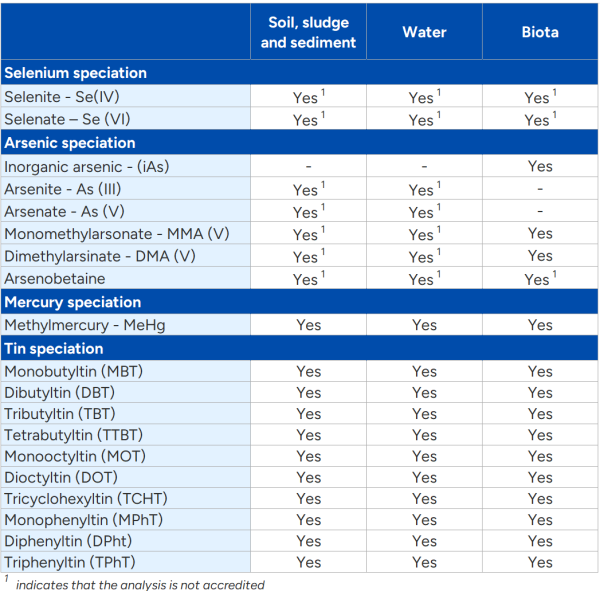The toxicity, bioavailability and mobility of an element can be highly dependent on the form in which it is present. Consequently, speciation analysis can provide valuable additional information and insight compared to a traditional measurement of the total elemental concentration.
Selenium, for example, is an essential micronutrient that is naturally occurring in our ecosystems. However, even moderate increases – particularly from industrial or mining activities, can lead to ecological harm. Some forms are bio accumulative meaning concentrations rise by each step in the food chain. Bioaccumulation explains how some animals may have higher concentrations of an element compared to the surrounding environment.
Over the last few years, new legislation and guidelines have been published that introduce threshold values for organotin compounds, inorganic arsenic and methylmercury.
ALS offers element speciation of selenium, arsenic, mercury and tin.

Please follow the link below to read more about metal speciation analysis and to explore our analytical solutions.